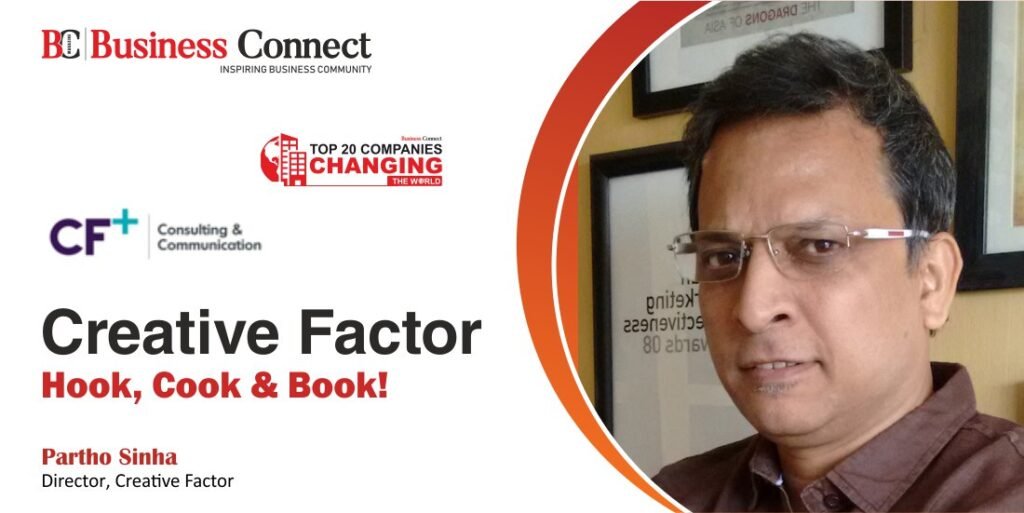Creative Factor
Hook, Cook & Book
In a survey by Statista, in 2020, three hundred twenty billion* emails were sent and received. Almost all of them can be made more effective; therefore, this article is for business leaders and executives as a guide to crafting everyday communication more creatively.
To be smart or be relevant and straightforward is often the considerable ambiguity? Through the following example, let us figure out.
‘A Toast Parade’ Reads the online banner headline, with the visual depiction of fresh bread slices marching towards a red-shiny toaster kept on the kitchen counter. Sounds creative and exciting? Or does a conversation between two bread slices with no visual of the product makes more sense?
“Sunny (1st bread loaf): Love the way you slide into the new Toaster,
Tia! Tia (2nd bread loaf): I would rather have you by my side when it gets all hot.
Sunny (1st bread loaf): Yes, I love the heat all over me. It gives me a nice tan.
Tia (2nd bread loaf): Wait till I am all done and have the golden butter glow!
Sunny (2nd bread loaf): hmm, you look good enough to eat!
So what is a Creative Communication?
There are many definitions of ‘Creative Communication.’ But for me, any communication that helps to persuade and engage a particular set of people to respond positively is creative. It needs to engage and empathise with target audience.
My point is, it doesn’t matter how creative or world-changing your idea is – if you can’t communicate its benefits or explain how it will change and benefit their lives.
Martin Luther King’s speech moved millions, “Let there be a world where people are not judged by the colour of their skin, but by the content of their character.”
We can pick two essential points from the above quote, first you need to have Confidence in yourself and belief in your ideas. The second is Empathy- If people are not listening and are not interested chances are they don’t relate to it.
We at Creative Factor abide by the three practical steps to devise our creative strategy and communication.
THE HOOK
It is the emotional trigger that attracts your audience and appeals to their self-image. Your communication is a promise to your audience that your idea and solution is what they need. Therefore, it should be unique and attention-grabbing.
Imagine a jealous conversation between bedroom gadgets over the newly installed electrical switch. A different perspective will make the audience read into your message rather than the button’s specifications. If you inspire someone to run, you don’t need to sell your shoes. Everyone loves a story, especially we Indians who love Bollywood, so why not engage in excellent storytelling.
THE COOK
This phase leads us to believe that creativity stems from our own experiences, and it is those experiences that we apply to the problems we face. We need to conduct research and do analysis to understand our audience and put ourselves into their shoes to capture their perspective. To touch people deeply, we need to know the little details and facts about them.
You may want to reach out to their dreams or passions, or pain points. Without developing the information
architecture, no one can cook excellent communication.
THE BOOK
“Fase más importante,” The most crucial phase of the journey tells us to communicate clearly with a focussed and engaging closure that helps get the desired result from your audience. Like a book, a story (communication) has a journey. Finally, one cannot be pushy and leave the audience in the lurch. The use of characters or heroes from secondary audiences (influencer) for closure is a great idea.
“Relationships thrive on the proper amount of love and right, communication”, – Partho Sinha



